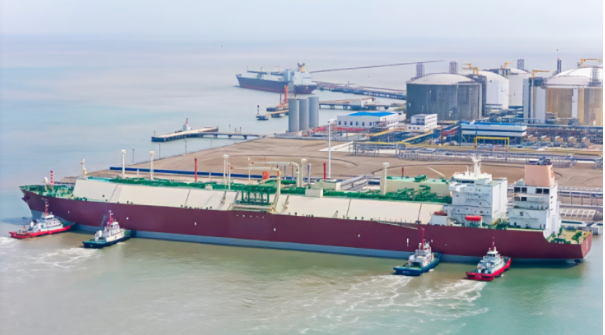The Tianjin Nangang LNG receiving terminal of Beiran is unloading the world's second-largest LNG carrier
On April 28, it was learned from the Tianjin Municipal Commission of Transport that on April 27, the Beijing Gas Tianjin Nangang LNG Emergency Reserve Project Receiving Station (referred to as: Beijing Gas Tianjin Nangang LNG Receiving Station) welcomed for the first time the Q-Flex type LNG vessel "ONAIZA/ Onaiza", which can carry 210,000 cubic meters of liquefied natural gas.

It is reported that the vessel is 315 meters long and 50 meters wide. It is currently the second largest LNG carrier type in the world. The cargo capacity of this vessel is 135,600 cubic meters, which can inject strong impetus into the energy security guarantee and green and low-carbon transformation of the Beijing-Tianjin-Hebei region.
The Q-Flex LNG carrier has a large carrying capacity and high speed. Its single shipping capacity is more than 1.5 times that of ordinary LNG carriers, which can efficiently meet the demand for large-scale clean energy transportation. However, its super-large scale poses extremely high requirements for the berthing conditions of the wharf, the carrying capacity of facilities and the safety of operations. To ensure the flawless unloading of the first vessel, the Tianjin Port and Shipping Administration Bureau closely collaborated with the receiving station, precisely implementing a "one vessel, one plan" approach. They tailored an unloading plan based on the characteristics of the "Onecha" vessel, detailed the operational norms for the entire process including berthing, mooring, and unloading, formulated and improved emergency response plans, and strengthened drills to ensure that risks were controllable. Conduct a comprehensive "physical examination" and maintenance of the mooring facilities, unloading arms and pipeline systems at the wharf in advance to ensure their good operation and safe and reliable mooring of ships. Meanwhile, the Tianjin Port and Shipping Administration, relying on the video surveillance system of dangerous goods enterprises within its ports, provided dynamic escort for the vessel unloading through "online guidance + remote monitoring", corrected operational deviations in real time, and ensured that the entire unloading process was standardized and orderly.
